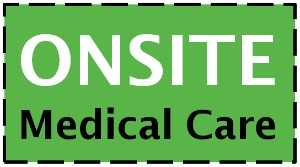
Health Care Consultant

There are a lot of variables to consider when exploring onsite health care for your business. Onsite health care clinics have been used to to increase productivity among employees and to manage health costs of many types of employers.
Sorting Out the Details of Onsite Health Care Clinics
If your company has determined this innovative benefits strategy may be something you’d like to investigate, ask yourself the following:
• Who will be able to access services at the onsite care clinics (current employees only, or spouses, dependents, and retirees as well)?
• Onsite health care clinics need staff and managers. What personnel mix would work best for your firm?
• Where should the clinic be located? Should it be a dedicated onsite resource, or shared with other employers?
• What services will be provided? Will the clinic treat only occupational injuries, or will it provide a wider range of health care services?
• Should patients be charged for services, and/or will they be covered by an employee health plan?
• How will privacy, legal, and regulatory concerns be handled?
• How will ROI be measured?
Compliance concerns also are an issue that should be addressed with your benefits advisor. Considerations include quality of care standards, managing responsibility for practitioner licensing, evaluating insurance or legal needs to protect your company, Medicare and Medicaid reimbursement, and navigating state-specific laws and regulations.
Tapping into Employee Demographics and Utilization Data
We encourage employers to check out their demographic and benefits utilization data. These stats can shed some light on whether onsite health clinics are a fit. Onsite health care clinics could be a good bet for a company with these characteristics:
✔ Facility located in geographic area facing primary care shortages
✔ Employees who spend a significant amount of time traveling (e.g., remote company locations, long commutes, metropolitan area with heavy traffic, etc.)
✔ Large concentration of families and dependents living in the same geographic location
✔ Low utilization of proactive primary care services
✔ High emergency room utilization
✔ High absence and lost time, especially due to unscheduled medical issues
✔ Low turnover rates
✔ Older populations (who are heavy utilizers of care)
✔ Younger populations who are inclined to utilize wellness and preventive services and may not have an established physician relationship
✔ Young families with increasing demands on their time

Related Posts:
How to Customize an Onsite Care Program
3 Benefits of Onsite Care Clinics
Onsite Health Clinics: Who Should Consider Them?
Final Rules for Wellness Programs Under Health Care Reform Released